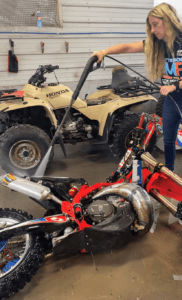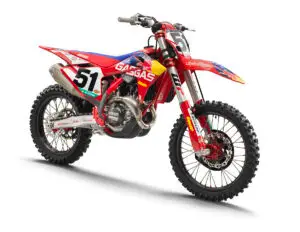
Wrench Tip Wednesday: Drowning a bike in water

If you raced Ironman GNCC, then you know what this is about!
Rule #1: CHOOSE A BETTER LINE! Yep, it is that easy! Hahah, just kidding! Sometimes it’s hard to tell how deep the hole really is when everything else prior was 2 inches deep and then one wrong line sent you 3 foot deep. Or even with creek crossings and rolling water, the current could push you over. I’ve seen that happen before.
What should you do if you go for a swim on your dirt bike?
If it is a quick submerge there is a chance the bike might still start. But a hot engine and cool water never mix. First, I would try to start it. If it does not start, pull the spark plug and flip the bike upside down. Kick the engine over. This helps push any water out of the top end. Flip it back over and install a sparkplug. If you do not have a spare with you, dry off the one you pulled out. Keep your fingers crossed that it starts otherwise you will be pushing the bike back. Be sure to change the air filter and oil once you get back. Also, pull your pipe off and dump the water out of it.

What if the bike does not start and needs to be pushed or towed back?
Load up and head home. The process is similar as above. Clean the bike! Take off the plastics and everything and get rid of the mud and dirt so it does not end up in places it shouldn’t! Take the spark plug out, flip upside down, and turn the engine over. Drain the oil and replace it a few times. Change the air filter. The float bowl could also be filled with water so check that. In extreme cases, it would not hurt to go ahead and replace the exhaust packing. With fresh oil, spark plug, and air filter installed go ahead and start the bike. Oh no! It still does not start; this could mean a complete engine rebuild may be needed. It all really depends how much water got in it. It is also not a bad idea to dielectric grease all connectors so they do not get corroded. While you’re at that, keep in mind all the grease on your bearings probably washed away too. Check your wheel, swingarm, and linkage bearings and make sure they are not rusty or loose. If still good, put more grease on them! Don’t fret if your mechanic skills are not up to par, take it to a local shop and let them dig into it. A good rule of thumb, always be honest about what has happened to the bike even if it is embarrassing, not just referring to the bike going swimming any instant something mechanical fails, tell the story. It helps the mechanic understand what has happened and why it happened.





